Sheikh Safi al-Din Khanegah and Shrine Ensemble
The Sheikh Safi al-Din Khanegah and shrine ensemble in Ardabil, Iran, stands as a remarkable monument, constructed between the early 16th and late 18th centuries.
Recognized for its significance, it was added to the UNESCO World Heritage List in 2010. If your travels lead you to Iran, particularly the northwest region, don't miss the opportunity to explore this architectural marvel.
Who was Sheikh Safi al-Din?
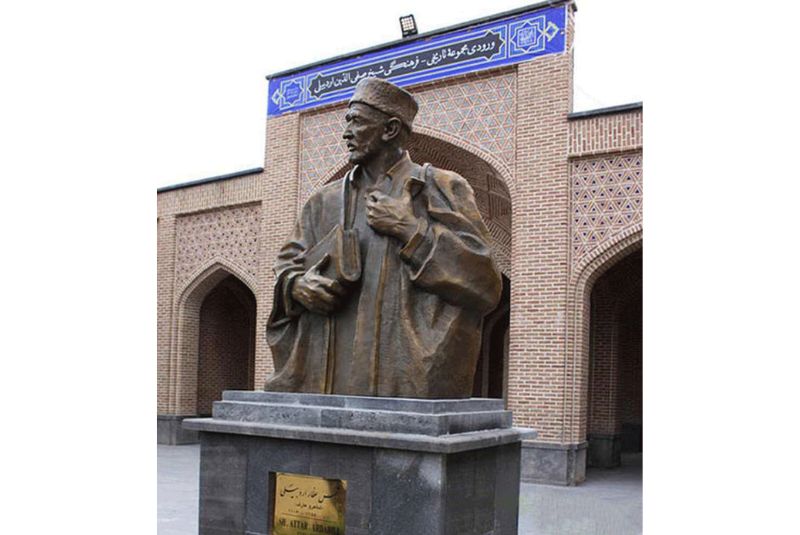
The Sheikh Safi al-Din Khanegah and shrine ensemble in Ardabil, Iran, is a historical complex associated with Sheikh Safi Al-Din Ardabili, the great-grandfather of the Safavids. Born in the 14th century in northwestern Iran, Sheikh Safi Al-Din received religious education from childhood and embarked on a journey in search of spiritual guidance. He found Zahed Gilani, the head of the Zahedi order, accepted him as his Murshid (spiritual leader), and eventually renamed the order as Safaviyyah.
Rumored to have visions of angels, Sheikh Safi al-Din became a prominent Islamic mystic. He played a crucial role in transforming the Safaviyyah from a local order into a broader religious movement through a series of reforms. Following his death in 1334, his successors erected the Sheikh Safi al-Din Khanegah and shrine ensemble, a complex built between the 16th and 18th centuries. The mausoleum, a domed circular tower standing at about 17 meters in height, was initially built by Sheikh Safi's son, Sheikh Sadr al-Dīn Mūsā. The ensemble, recognized as a UNESCO World Heritage site in 2010.
| Related: Top 14 Religious Tourist Attractions in Iran
Architectural Features of Sheikh Safi al-Din Khanegah
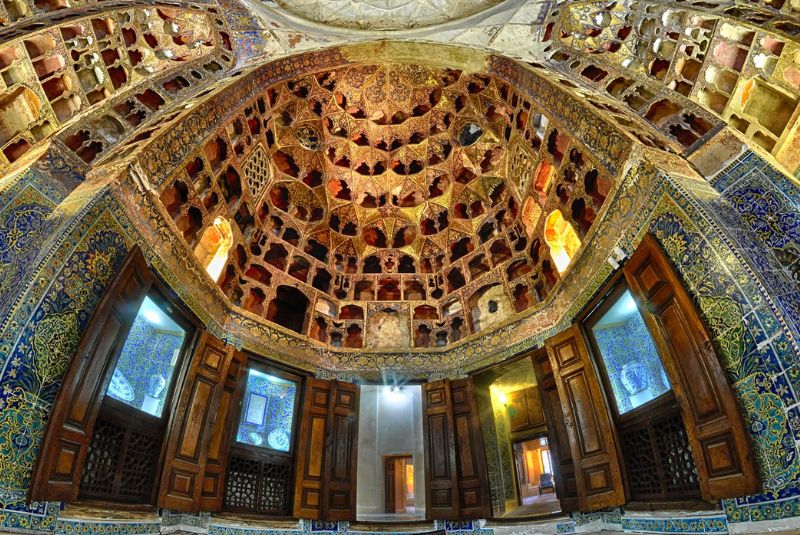
The complex comprises various structures surrounding a small courtyard and incorporates a route to the sheikh's shrine divided into seven segments, symbolizing the seven stages of Sufi mysticism. Eight gates separate different parts of the mausoleum, representing the eight attitudes of Sufism. The Sheikh Safi al-Din Khanegah and shrine ensemble stands as both a religious site and a historical monument, reflecting the enduring legacy of Sheikh Safi Al-Din and the Safaviyyah order.
The present complex known as the tomb of Sheikh Safi al-Din Ardabili encompasses various architectural features. The cylindrical tower serving as the tomb is surmounted by a short dome. Underneath the dome lies a vault, considered one of the valuable elements of the tomb, featuring an inscription in the Reqa style calligraphy along its perimeter.
The architectural ensemble encompasses the external areas of the tomb, the portal, a spacious courtyard, a portico, Sheikh Safi al-Din's grave, a designated Women-only space (Andaruni), the tomb of King Ismail I, the Chini-house adorned with beautiful stuccos, and several precious wooden and silver doors. Furthermore, the complex includes the Janatsara Mosque, Khanqah, Cheraqkhaneh (house of lights), Chellehkhaneh (a praying room), and the burial ground of the martyrs.
The tomb of Sheikh Safi al-Din Ardabili stands out for its numerous works of art, showcasing various themes. Noteworthy features include mosaic tiles, vaulted tiling with paintings, intricate stuccos, precious inscriptions, and exquisite calligraphy by renowned Safavid-era calligraphers such as Mir Emad Hassani, Mohammad Ismail, Mir Qavamoddin, and. The site also boasts precious wood-carvings, silversmithing, illuminated manuscripts, goldsmithing, and paintings, exemplifying diverse styles of stonework, contributing to the historical and artistic richness of the Sheikh Safi al-Din Khanegah and shrine ensemble.
Sheikh Safi Al-Din's Mausoleum

The structure recognized as the Shrine of Sheikh Safi Al-Din, also known as Allah Dome, stands as an impressive representation of Iranian architectural prowess. Despite its cylindrical external appearance, the shrine reveals an octagonal interior, measuring 6 meters in diameter and 17 meters in height. The mausoleum is adorned with exquisite stuccowork, delicate floral decorations, and intricate calligraphy featuring Quranic verses. Noteworthy among its artistic treasures is a wooden inlay-enamel box.
| Related: Top 16 Most Beautiful Mosques in Iran
Mohyeddin Mohammad's Tomb
Known as Haramkhaneh, the final resting place of Sheikh Safi al-Din's son offers a simple corridor leading to a rectangular Riwaq with a short dome. The southern gate is adorned with marvelous arabesque and floral motifs, complemented by a stucco frame featuring diverse religious inscriptions.
Jannat Sara Iwan
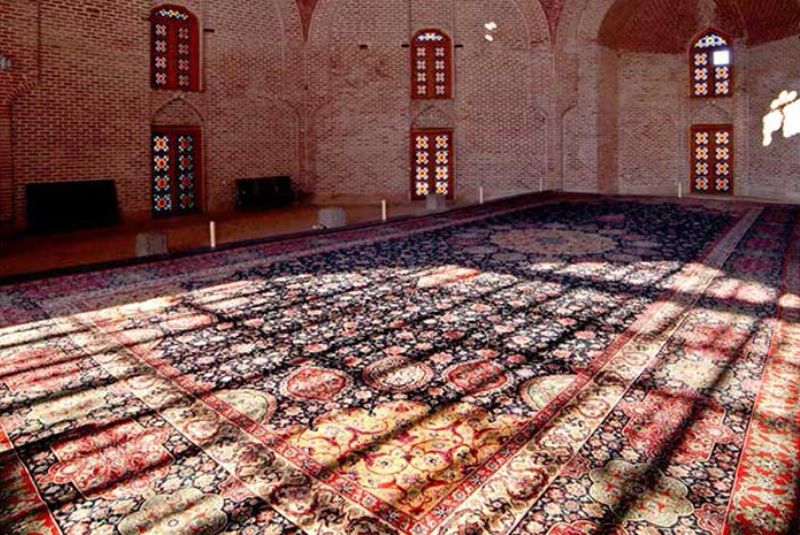
The square-shaped Jannat Sara Iwan, also known as the mosque, is the tallest building in the Sheikh Safi al-Din complex. Its interior is adorned with delightful arched niches carved into each wall, while the absence of a Mihrab suggests its past use for Sufi assemblies and rituals.
Shah Ismail I's Memorial
This memorial boasts magnificent artistic embellishments, with gilded wall paintings and a calligraphic inscription in stucco by a renowned artist enhancing its aesthetic value. The resting place of Shah Ismail I features an exquisite carved inlaid wooden case adorned with geometric patterns.
House of Porcelain (Chini Khane)
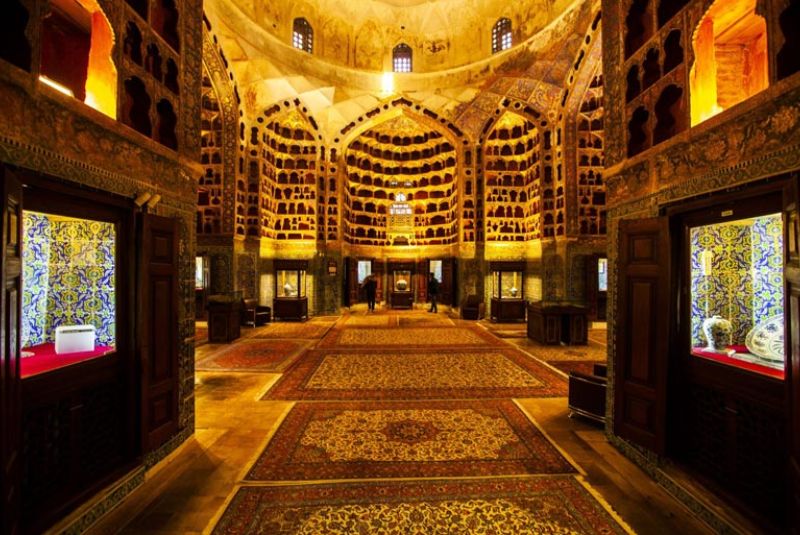
Constructed in the 17th century, the House of Porcelain stands as an architectural marvel with a symmetrical octagonal exterior and a rectangular interior featuring artistic polygonal wall indentations. The building received its name after Shah Abbas I ordered its construction, with porcelain gifts from the Chinese emperor adorning its interior. Notably, the Porcelain House features an elaborate stucco arcade, comparable to the Music Hall in Ali Qapu, along with exquisite tilework, stuccowork, and gilding.
| Read more: Top Isfahan Mosques You Should Visit
Dar ol-Hadis
Located in the east of the ensemble, Darol Hadis or Taq-e Motevalli stands opposite the monumental Jannat Sara building. Originally serving for religious purposes, including education and negotiation during the reign of Shah Abbas I.
Cheleh Khaneh
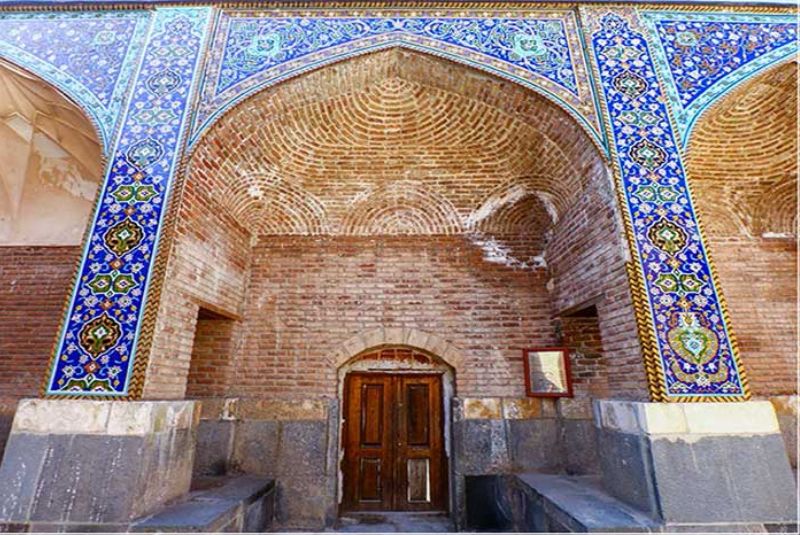
Cheleh Khaneh, meaning retreat house, served as a space for Sufi members to practice penance and solitude. Two Cheleh Khanehs face each other in the Sheikh Safi al-Din Ensemble, with the older one designated for Sheikh Safi al-Din and the newer one belonging to his son.
Dar ol-Hoffaz Hall
Darol Hefaz Hall, or the House of Icicle, served as the gathering place for Quran reciters. The structure derives its name from the Arabic words "Dar" meaning place and "Hoffaz" meaning reciters.
Shahid-gah Graveyard
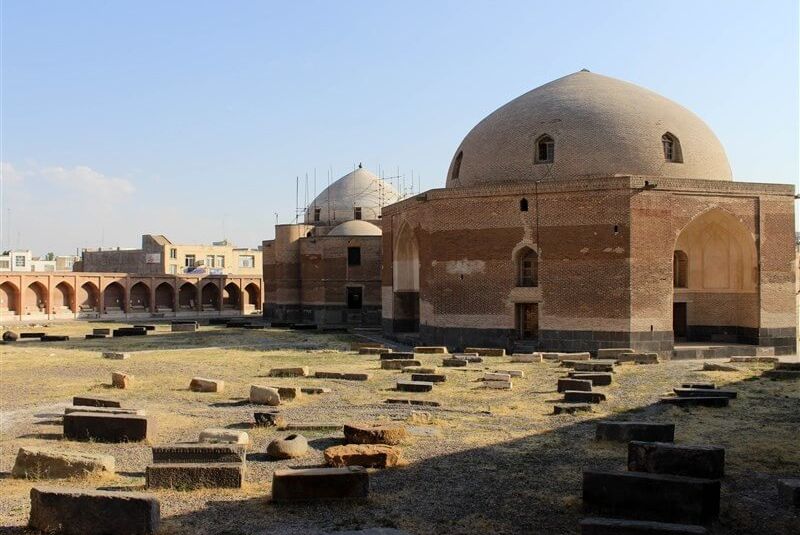
Legend has it that Shah Ismail I, along with Safavid noblemen and commanders, transported the remains of his father and great-grandfather to Ardabil after the occupation of Shirvan. Additionally, some martyrs from the 16th-century Battle of Chaldiran were interred in this cemetery.
| Suggestion: Fandoqloo Forest in Ardabil
Sheikh Safi al-Din Khanegah Location and Access
Address: Ardabil, Sheikh Safi Al-Din Ardabili, Ali Qapu, Iran
The shrine is situated in Ardabil, Iran, near Ali Qapu. Travel options include Ardabil International Airport (11 km away) for air travel and Ardabil railway station (4 km away) for trains. Taxi services or public transportation are available for both options.
Best Time to Visit Sheikh Safi al-Din Khanegah
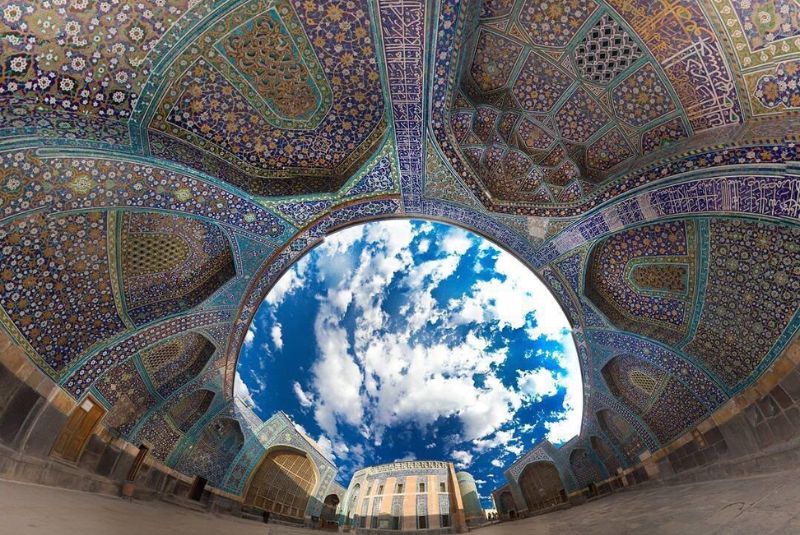
The ideal time to visit Sheikh Safi al Din Ardabili's shrine depends on factors like weather, local events, and peak tourism seasons. Generally, early morning or late afternoon is recommended for favorable weather conditions and optimal lighting for photography. Traveling during off-peak seasons, particularly winter and summer in Ardabil, is advised to save on accommodation and travel costs.
Attractions Nearby Sheikh Safi al-Din Khanegah
Sheikh Safi al-Din Khanegah and shrine ensemble nearby attractions include:
Ali Qapu
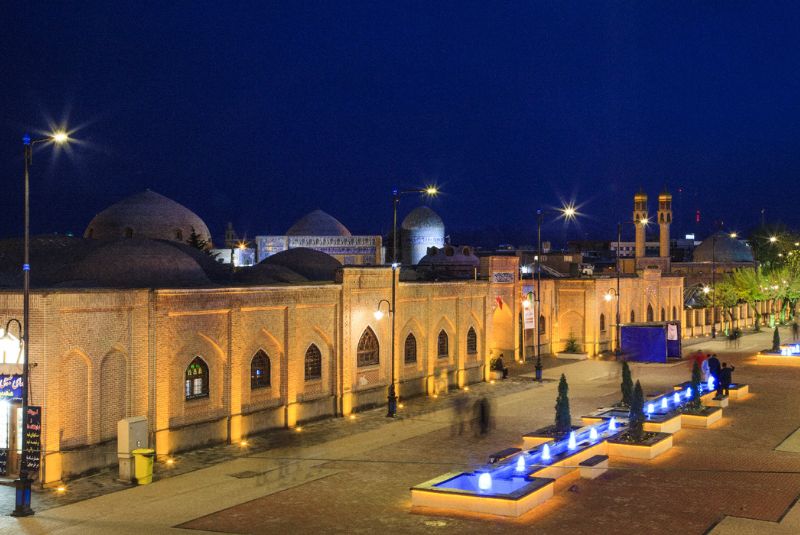
A majestic palace adjacent to the tomb, Ali Qapu once served as the royal abode for Safavid rulers, doubling as a venue for grand ceremonies and administrative affairs. Renowned for its unparalleled architectural design and exquisite artistic embellishments, the palace boasts a magnificent entrance adorned with intricate tiling, elegant calligraphy, and graceful arches. Its captivating mirror vault and the mesmerizing Hall of Mirrors, adorned with intricate mirror work on walls and ceilings, leave visitors spellbound with their beauty.
Ardabil Museum of Anthropology
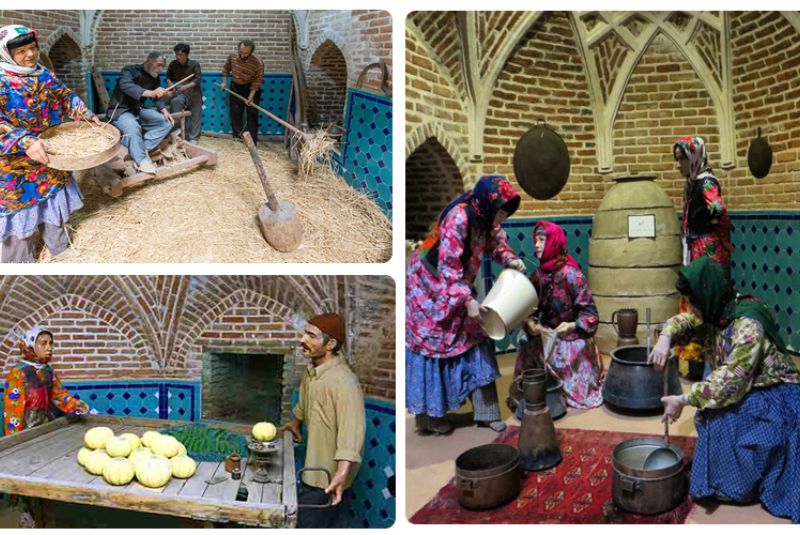
For those inclined towards cultural exploration, the Ardabil Museum of Anthropology awaits in Ali Qapoi square. Housing an impressive collection of over 3o statues adorned in traditional attire reflecting the diverse culture of Ardabil province, the museum offers insights into the region's linguistic nuances, sartorial customs, and culinary traditions through ancient manuscripts and exhibits.
Haft Cheshme Bridge
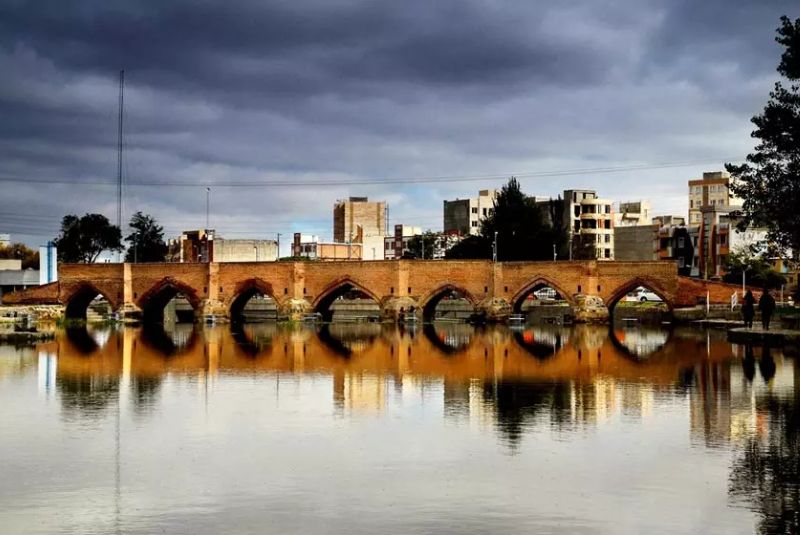
Venturing further, one encounters the Haft Cheshme Bridge, one of Ardabil's most historic and picturesque attractions near Khanega and the sanctuary of Sheikh Safi al-Din. Constructed during the Safavid period using plaster and lime, this ancient bridge stands as a symbol of the region's heritage, inviting travelers to admire its architectural beauty.
Historical House of Khadim Bashi
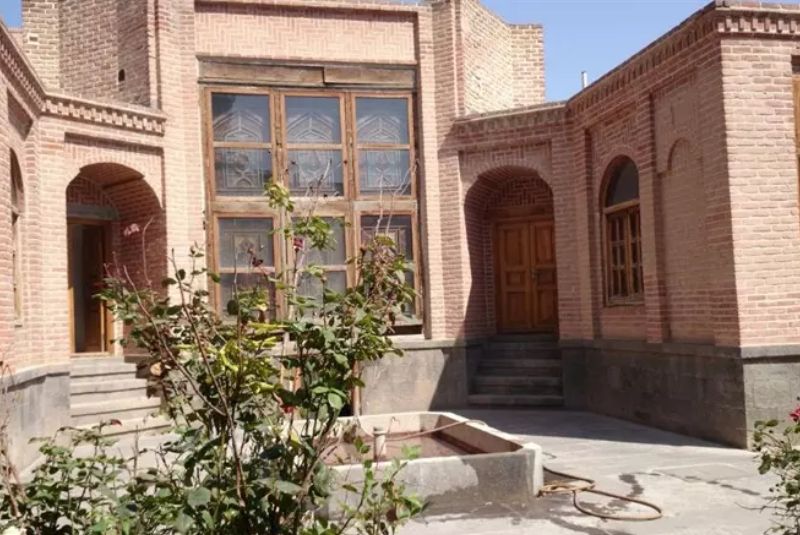
In the vicinity stands the historical house of Khadim Bashi, a relic from the Qajar era nestled in the Ouchdokan neighborhood of Ardabil. Once the property of Sheikh Safi al-Din Ardabili, the building, unfortunately, stands largely abandoned today, revealing only a few remaining bricks and tiles.
Final Takeaway
Prepare yourself for an enchanting voyage as you enter the Sheikh Safi al-Din Khanegah and shrine complex, a realm that transcends the boundaries of time. Here, reverence and spiritual essence envelop you, and each stride unveils the marvels of architectural craftsmanship. The mesmerizing intricacies of tiling and the grandeur of domes within this sacred tomb are bound to leave you in awe. In essence, visiting the resting place of Sheikh Safi al-Din Ardabili transports you into the realm of mysticism.
Share your story!
Comment below and let us know about your Experience.
Your story inspires others!


Comment
Leave a Comment